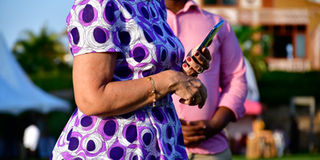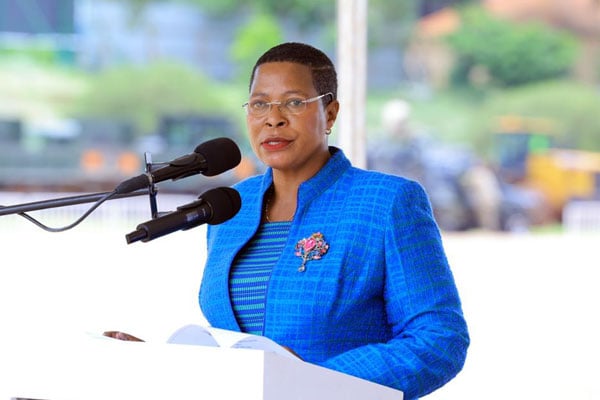Jewelry, women products dominate Uganda’s imports

Spent more: Uganda spent more money on jewelry, ornaments and women products more than any other import in 2019. PHOTO BY EDGAR R BATTE
Jewelry, ornaments and women products formed the largest portion of Uganda’s import bill, according to details from a Ministry of Finance report.
According to a Ministry of Finance report for the period ended December 2019, jewelry and ornaments cost Uganda close to $1.3b (Shs4.8 trillion).
This, according to a report seen by Daily Monitor, contributed at least 16.7 per cent of the Shs28.5 trillion total import bill recorded in 2019.
The report classified jewelry and ornaments as natural or cultured pearls, precious or semi-precious stones, precious metals, metals clad with precious metal and articles thereof, imitation jewelry and coins, among others.
Gold unwrought or in semi-manufactured or in powder form took the largest share of imports in This category, taking up at least Shs4.8 trillion.
The balance – at least Shs3b - was spent on importation of other products such as imitation jewelry, articles of natural or cultured pearls.
Important to note, Uganda spent $2.56m (Shs9.4b) on prepared feathers, articles made of feathers, artificial flowers and human hair for the period under review.
The biggest percentage of this – at least $2.4m (Shs8.8b) - the report notes, was spent on wigs, false beards, eyebrows, eyelashes and human hair products.
Other notable, but seemingly luxurious imports, according to the report, included hats, headbands and hoods, which saw the country at least spend $3.2m (Shs11.8b). Umbrellas, sun umbrellas, walking-sticks, seat-sticks, whips, riding-crops and parts took up at least $619,550 (Shs2.2b), according to the report.
Ms Victoria Ssekitoleko, the Private Sector Foundation Uganda vice chairperson and president of International Women in Coffee-Uganda Chapter, said in reaction to the composition of the import bill that “as Ugandans we have to sort our priorities and get them right”, noting: “I won’t be surprised that the very people buying jewelry are the ones complaining now that they want posho”.
“It is high time we start prioritising basic needs when importing. This should start from the kind of education we give to our children who will make decisions for this country tomorrow,” Ms Ssekitoleko said.
Uganda is a net importer with much of the country’s imports sourced from Asia, especially China, United Arab Emirates and lately Vietnam.
However, there have been efforts by government to drive the import substation agenda through policy shifts and formulation such as Buy Uganda Build Uganda.
Dr Susan Kavuma, an economist and lecturer at Makerere University School of Economics, said that whereas spending on commodities such as petroleum products was necessary, it was unnecessary to spend huge sums of money on consumptive products such as luxurious ornaments and human hair.
“Jewelry and other products Ugandans spend on are consumption expenditures. A very good economy should be importing inputs into production,” she said, challenging Ugandans to start producing some of the items that are being imported.
Other unique imports
Textiles: The document, which classifies close to 1,500 products imported into Uganda in the year ended December 2019, also indicates that the country imported textiles and textile articles with different specifications worth $291b (Shs1 trillion).
Under the textiles category, the report indicates, at least $1m (Shs4b) was spent on textiles, clocks and watches while $16.6m (Shs61b) was spent on leather, saddlery and harness, travel goods, handbags and similar containers and articles of animal gut (other than silk-worm gut), among others.
At least $59m (Shs218b) was spent on man-made staple fibres such as woven fabrics and threads, among others while apparel and clothing accessories, not knitted or crocheted cost Uganda close to $35.2m (Shs130b).
Foot wear: Foot wear, which included waterproof footwear, footwear with rubber, plastic, leather soles and parts of footwear with removable soles, among others cost Uganda $67.9m (Shs251b).




